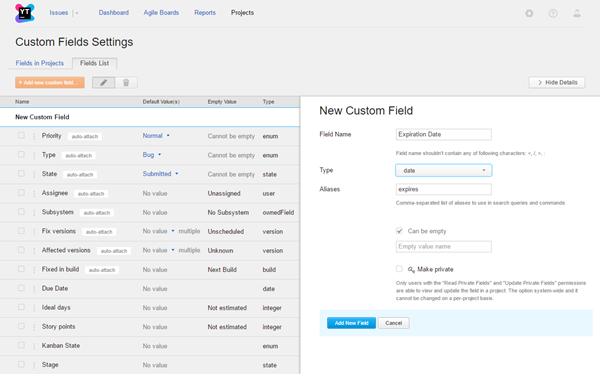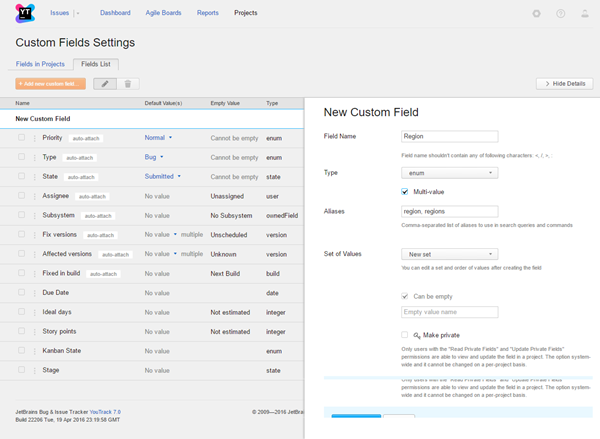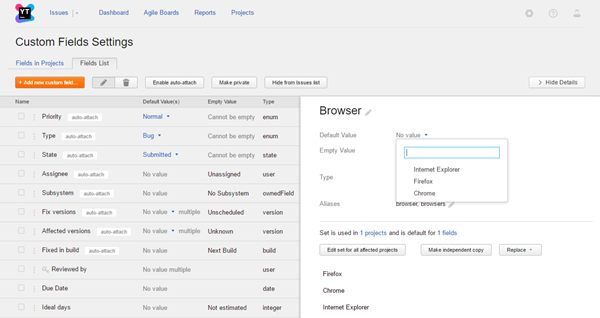Create and Edit Custom Fields
On this page:
As an administrator, you can create, edit, and delete customs field in YouTrack. You can add custom fields to the system and define their properties without attaching them to projects in the system.
Users with project administrator roles can create their own custom fields and attach them to their own projects.
When you create a new field, you can attach it to a project or let the project administrator attach the field as necessary.
Create a Custom Field
The process for creating a custom field differs by field type.
Fields with simple data types store single values. The data type that you assign to the field determines how these values can be used elsewhere in YouTrack.
For example, when you assign a field a date data type, the values can be used to generate a report that shows issues that are past due.
To create a custom field with a simple type:
- Navigate to and click the Add new custom field button.

- Enter values in the custom field settings. For a detailed description of each setting, see Create and Edit Custom Fields
- Click the Add New Field button.
Custom fields with enumerated types (enum[* | 1]) such as State State and Priority have a few more options.
In addition to the settings that are used for simple types, you must define a list of possible values that can be selected for the field.
To create a custom field with an enumerated type:
- Navigate to and click the Add new custom field button.

- Enter values in the custom field settings. For a detailed description of each setting, see Create and Edit Custom Fields
- For enumerated types, you have the following options:
- Click the Add New Field button.
Edit a Custom Field
You can modify the settings for a custom field to control its visibility and attach it to new projects automatically.
To edit a custom field:
Delete a Custom Field
When you delete a field that is used in a project, the field is deleted from all issues. Values that were stored in this field are lost. If you delete a custom field that has never been attached to a project, it is deleted without confirmation.
To delete a custom field:
Custom Field Settings
The following settings are used for fields with simple data types:
The following additional settings are available for fields with enumerated data types:
